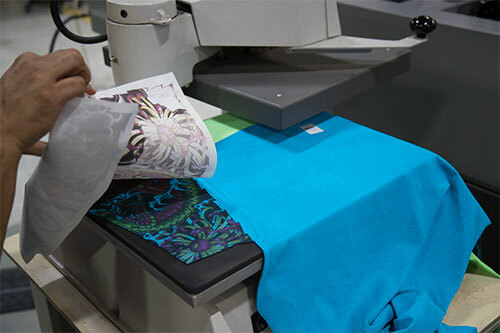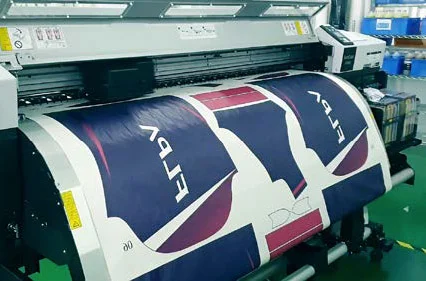Innovations in DTF Printing: Just How It's Reinventing the Industry
The textile printing sector is going through a substantial improvement, driven by the innovative innovations in Direct-to-Film (DTF) technology. With remarkable ink solutions, enhanced movie and glue innovations, and the integration of automation, DTF printing offers vibrant, long lasting prints on a variety of textiles, satisfying the increasing demand for customization.
Advancements in DTF Technology
Advancing rapidly, DTF (Direct-to-Film) printing technology has undertaken significant improvements that are changing the fabric industry. Among the most notable advancements is the enhancement in print high quality. Modern DTF printers utilize innovative ink formulations that cause vivid, sturdy prints with high resolution and color precision. These inks are especially engineered for compatibility with various fabric kinds, ensuring constant top quality despite the product.

Furthermore, advancements in film and glue technologies have actually improved the overall application procedure. New movies use far better elasticity and bond, improving the toughness and washability of the printed styles - screen printing. This makes certain that the prints preserve their integrity and vibrancy even after numerous laundries
Lastly, environmental factors to consider have actually triggered the growth of eco-friendly DTF services. Manufacturers are progressively embracing lasting techniques, such as making use of recyclable films and water-based inks, aligning with worldwide initiatives to decrease the sector's ecological footprint.
Advantages Over Standard Approaches
When contrasting DTF printing to typical methods such as display printing and direct-to-garment (DTG) printing, numerous unique advantages emerge. DTF printing. One of one of the most considerable advantages is its adaptability in textile compatibility. Unlike screen printing, which commonly needs particular material kinds, DTF printing can be put on a more comprehensive variety of materials, including cotton, polyester, and blends, without jeopardizing print high quality
An additional notable advantage is cost-effectiveness, specifically for little to medium-sized orders. Conventional screen printing comes to be financially sensible only at greater volumes because of the configuration costs included. On the other hand, DTF printing eliminates these setup costs, making it a lot more budget-friendly for smaller sized sets and one-off styles.
In addition, DTF printing masters resilience and washability. The prints generated are durable and keep their stability through numerous laundry cycles, outshining DTG prints that may split or fade over time. In addition, DTF printing uses faster turnaround times. Without the requirement for substantial arrangement, layouts can be printed and moved in a fraction of the time required for display printing.

Improved Design Capacities
DTF printing uses boosted style capabilities that establish it apart from standard printing techniques. The procedure involves printing a design onto a special movie, which is after that moved to material.
In addition, DTF printing supports a wide selection of textiles, consisting of cotton, polyester, blends, and also non-textile substrates. This convenience opens doors for imaginative applications in diverse markets such as fashion, home decor, and marketing items. Unlike screen printing, which can be limiting because dig this of shade splitting up and stencil development, DTF printing streamlines the procedure, making photo-realistic and multi-color designs much more easily accessible.
Furthermore, DTF printing stands out in accomplishing constant shade accuracy and vibrancy. In essence, DTF printing encourages designers to press the boundaries of creativity, supplying aesthetically sensational outcomes that were previously unattainable.
Price and Time Efficiency
Among the remarkable advantages of DTF printing exists in its price and time performance, making it a preferred option for numerous services. By getting rid of the demand for screen setups and considerable pre-production processes, DTF printing considerably minimizes preliminary costs. Unlike traditional techniques that require considerable financial investment in screens and configuration times, DTF printing enables straight application onto different materials with marginal prep work. This reduction in setup time equates right into faster manufacturing cycles, making it possible for organizations to meet orders much more promptly.
Furthermore, DTF printing stands out in creating brief runs and custom-made orders cost-effectively. The capacity to create high-quality prints without the demand for big quantity dedications lessens waste and enhances resource allotment. This adaptability is especially beneficial for small services and startups that might not have the funding to buy massive production runs.
In terms of operational efficiency, DTF printing's streamlined operations improves overall performance. Thus, DTF printing stands out as a transformative option in the printing sector.
Future Trends in DTF Printing
Anticipating future patterns in DTF printing discloses a landscape marked by rapid technical developments and enhanced market need (DTF printing). One substantial pattern is the assimilation of man-made intelligence (AI) and artificial intelligence algorithms to maximize print top quality and enhance procedures. AI-driven systems can anticipate possible problems and readjust settings in real-time, ensuring continually high-grade output
Additionally, developments in environment-friendly inks and sustainable materials are anticipated to get grip. As ecological problems end up being extra pressing, the sector is most likely to see a shift towards safe and biodegradable inks, minimizing its eco-friendly impact.
Customization and personalization will likewise play a critical her response function. With the expanding customer demand for unique, personalized products, DTF printing modern technologies are advancing to use more intricate and comprehensive customization alternatives. This pattern is sustained by enhanced software options that enable even Look At This more facility and innovative designs.
Finally, the assimilation of DTF printing with other electronic systems and e-commerce remedies will end up being extra seamless. This connection will certainly allow businesses to offer on-demand printing solutions directly to consumers, better driving development in the sector. These trends jointly highlight a future where DTF printing not just fulfills yet exceeds the developing requirements of the marketplace.
Conclusion

When comparing DTF printing to typical methods such as display printing and direct-to-garment (DTG) printing, a number of distinct advantages arise. Unlike screen printing, which commonly needs particular fabric types, DTF printing can be used to a more comprehensive range of materials, including cotton, polyester, and blends, without jeopardizing print high quality.
DTF printing offers improved style capabilities that establish it apart from conventional printing approaches. Thus, DTF printing stands out as a transformative solution in the printing market.
Technologies in DTF printing considerably enhance the textile printing industry by giving superior print effectiveness, adaptability, and top quality.